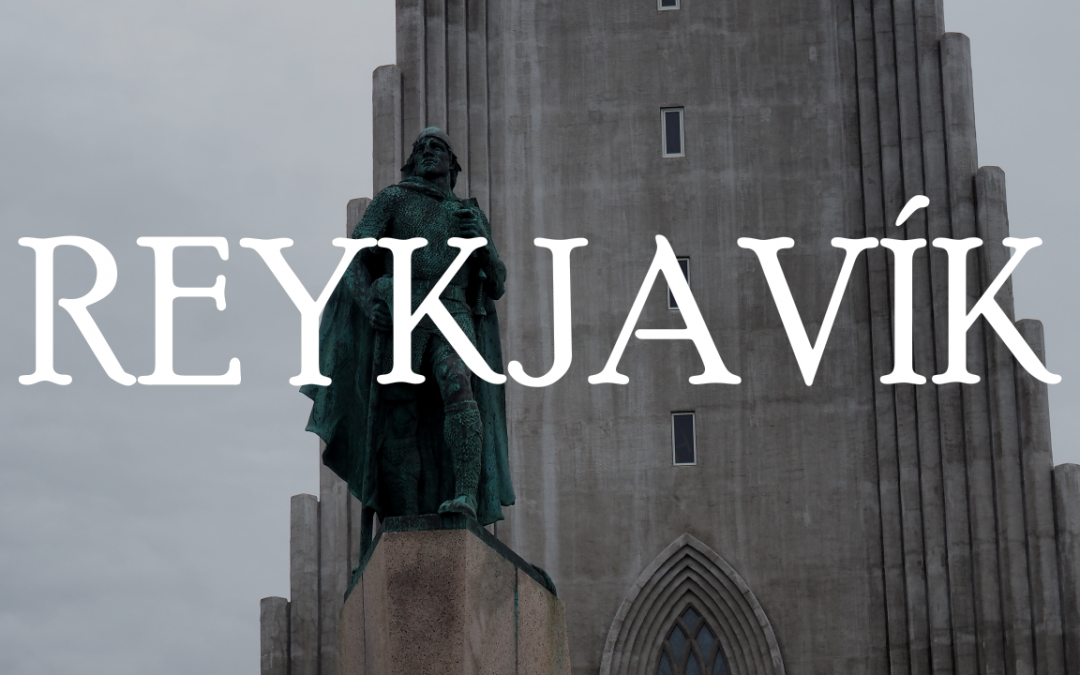First Things I Noticed
I recently spent some time in Reykjavik. I thought ten days would be more than enough of the city, with it being relatively small. But it turns out I was wrong. You could spend weeks in Reykjavik, and still, on leaving, feel like you’ve only scratched the surface. But then, Reyklavik is the type of place to inspire such a feeling even if it is not justifiable. The first thing I noticed about the city was her surroundings. Reykjavik is encircled by vast snow-topped mountains. Walk to the coast and you’ll see some of Iceland’s most grand mountains overlooking a bay of crystal clear water. Beyond the mountains is a largely untamed wilderness that makes the journey from the airport to Reykjavik an experience in itself. The second thing I noticed is that in the summer it never gets dark.
As Iceland is so far north it just stays light all day and night at this time of year. This can confuse your body clock. When it’s 12 at night it feels more like 4 in the afternoon. It’s weird. And if you visit in winter expect the opposite, with only around 5 hours of sunlight by mid December. Things get weird when you go that far north. This meant I genuinely got sun burnt at night, which I honestly never expected anywhere… let alone Iceland.
I think the next thing I noticed was the language. The Icelandic language is insane. It might actually be the most confusing and difficult language in the world. I mean, if you go anywhere outside of Reykjavik, good luck pronouncing it’s name. Fortunately everyone in Reykjavik speaks English. I even heard Icelandic natives on the street speaking English to each other. So getting around and seeing sights was easy.
Things to See in Reykjavik
Many sights of interest can be seen simply by walking through Reykjavik.
Hallgrímskirkja – I’ve never seen anything like this before. It’s a giant church, built by the first Icelander to be educated in architecture. He really hit the ball out of the park with this church when it was built in the 1940s. It remains one of the tallest and most unique churches in the world, and is among the best buildings I’ve ever witnessed.
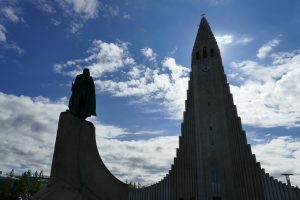
The Sun Voyager – A much smaller but equally beautiful attraction, the sun Voyager is a metal sculpture in the shape of a viking boat. At the edge of Reykjavik’s coast, it is perfectly positioned, being overlooked by great mountains. As the artist behind the sun voyager was in the last years of his life on designing it, some believe it is symbolic of the hopes he will be accepted into heaven. Perhaps the ship shows in meant to be a vessel to transform his soul to the next world.
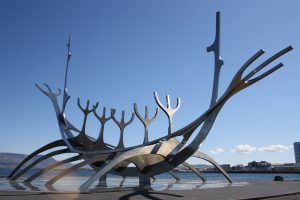
Hofdi – Hofdi is a big house, more well known as the most haunted house in Iceland. The house was built in 1909 for the French ambassador to live in. But for unknown reasons the French abandoned it. It’s next inhabitant swore the house was haunted by a female ghost who walked it’s halls at night. Needless to say, he soon moved out. By the 1950s it housed the British embassy. But the ambassador was so scared of paranormal activity he claimed to witness that he demanded the embassy move somewhere else. The British embassy found a new home soon after. In following decades ghost stories grew so attached to Hofdi house that the government was forced to comment on it.
In a short statement the Icelandic government said “We do not confirm nor deny that the Hofdi has a ghost”. So that’s wild! other legends tell that the ghosts of Viking warriors often get drunk in the house. So that’s wild.
Excursions – Another option for sightseeing are the numerous excursions that take you out of Reykjavik. You can see enormous glaciers, waterfalls with rainbows arching over them, black volcanic beaches, and just some beautiful places. You’d be missing out if you visit Reykjavik without witnessing the majesty of rural Iceland.You will see places that seem like they belong on different places. the Icelandic wilderness is truly unspoiled.
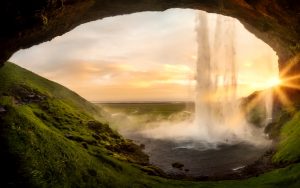
Museums – When back in Reykjavik you might consider visiting the city’s many museums. These include the Viking Saga museum, the whale museum, and even the penis museum. Yes the famous penis museum of Reykjavik. I paid it a visit because how could I not? But I soon realized what an enormous mistake that was. The thought of being surrounded by dozens of preserved animal penises might creep you out. Well… actually being there in person was wore than what you’re imagining. Everyone else in the museum seemed equally disturbed by it, apart from one Japanese couple who really seemed to be enjoying their time there. It’s one of those places you have to go to but really shouldn’t and will regret it.
The Pearl – One attraction you won’t regret visiting is Perlan, a British would war two airfield transformed into a museum and restaurant. To reach it you must climb a hill covered in thick woodland. Getting past the trees you will feel a cool breeze and see Perlan. After then climbing Perlan you will be greeted by an incredible view of Reykjavik and the mountains surrounding her. At the top of Perlan is a restaurant, a great place to grab a drink while admiring the view.
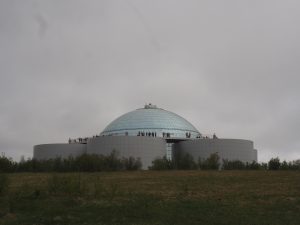
There is a lot to do and see in Reykjavik considering it’s population is just 130 thousand. But taking into account the history of Iceland I’m surprised any of her settlements are this large.
History
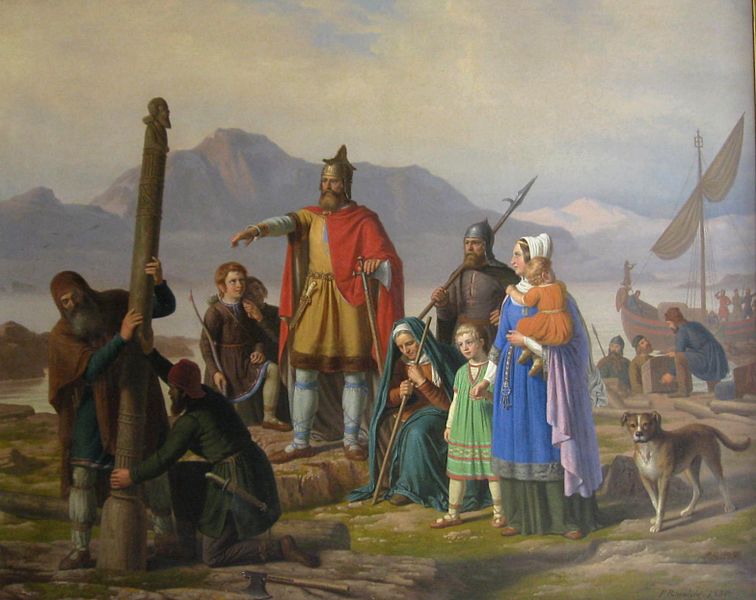
Iceland was discovered by Viking explorers some time during the medieval era. They found no humans on the entire island and soon understood why. Several groups of Vikings attempted to settle in Iceland, but with the island’s harsh condition and remote location, all failed. People were starting to doubt if Iceland was habitable in the long term. But then, one Norwegian left his native land to escape a blood feud. He was Ingolfur Arnarson and the blood feud must have been really bad for him to actually choose Iceland as a new home. But unlike his predecessors he seems to have carefully chosen the location of his settlement, being near natural hot springs to make winters more bearable, and having a natural bay to support growth.
Arnarson called his settlement Reykjavik, roughly meaning “Bay of smoke” in Old Norse. He didn’t know it at the time but Reykjavik would be Iceland’s first successful long term settlement. Literally being founded by Vikings, the town was built on slavery. Often raiding and ransacking Ireland and Scotland, Celtic women were often kidnapped and taken back to Reykjavik as slaves. Modern DNA tests reveal Icelandic people have significant Irish heritage from this. But Iceland was still remote and so cold it made Norway seem warm. Reykjavik grew incredibly slowly in the centuries following it’s founding. It just wasn’t seen as an important place in any way.
Still Norway asserted control over Iceland, although it took a small civil war between clans within Iceland for this to happen. But in the 13 hundreds Norway merged with Denmark, under the Danish monarch. From here Iceland was ruled by Denmark, even after Norway was not. Denmark eventually banned Iceland from trading with any country other than Denmark. Seeing as Iceland’s economy was primarily agriculture and fishing, they really didn’t have much to trade with Denmark. This was a disaster for Iceland as a whole, but not for Reykjavik.
It forced many to give up farming and move to bigger settlements like Reykjavik in search of work. Reykjavik was finally on it’s way to becoming a city, a mere thousand years or so after it’s founding. But then a series of natural disasters killed one quarter of Iceland’s population, posing the biggest threat to Reykjavik since the black death swept through Iceland. Speaking of which, there is a drink in Iceland called Black Death. We’ll look at this later on in the city guide.
Surviving a string of disasters, Reykjavik maintained a growth into the 20th century – but was still an impoverished city with many residents living in literal slums. Luckily the city then received a gift called Adolf Hitler. You see, Nazi Germany’s occupation of Norway made the allies panic over the prospect of Iceland being next. So Britain invaded Iceland. It was a bloodless invasion with only one death, and that was a suicide while en route to Iceland. So why is this good? Well the British and American presence in Reykjavik had an overwhelmingly positive effect. They built two airports, improved infrastructure, and boosted the local economy with personal spending.
During the occupation, half of Reykjavik’s population were allied soldiers. It just wasn’t the same city by the end of the war. It was international, with modern infrastructure. Without any of these events from her history, who knows what Reykjavik would be like today.
Food
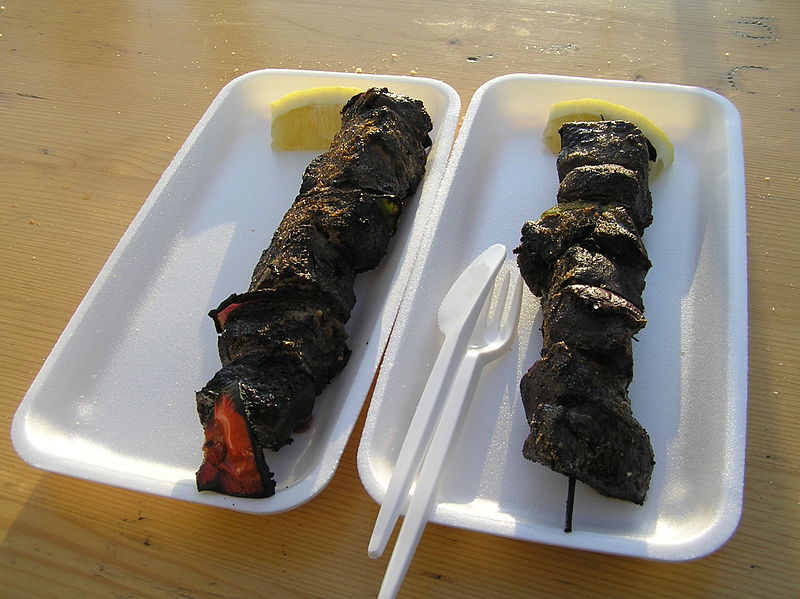
I mentioned a drink called Black death. It’s an especially strong type of wine used to ease the consumption of Iceland’s national dish… which is genuinely the worst food I have ever tested. Fermented shark… literally rotten shark meat. Even the smallest amount of this is enough to decimate your mouth with the world’s worst after taste, which is where black death comes into play. It’s hard to know if this drink will wash away the terrible taste or just make it worse. I didn’t try Black Death because I’m frankly not brave enough. It’s traditional name is Brennivin – which literally means “burning wine”. Apparently drinking it feels like your throat is on fire. Simply speaking it’s the most Icelandic thing ever.
At one point the government tried to ban it, but settled for every bottle having a black label depicting a white skull. It wasn’t long before Brennivin came to be known as black death. Don’t drink it. It’s madness. Icelandic food in general is a bit grim, but there are exceptions. Street dogs sold in Reykjavik is very good. There’s even a cafe called Icelandic street food where you can buy soup served in bowls made of bread. Hot dogs sold on the streets of Reykjavik are also very good, although I’m not sure why. The sauce they add must be unique as I’ve never had another like it.
Travel Tips
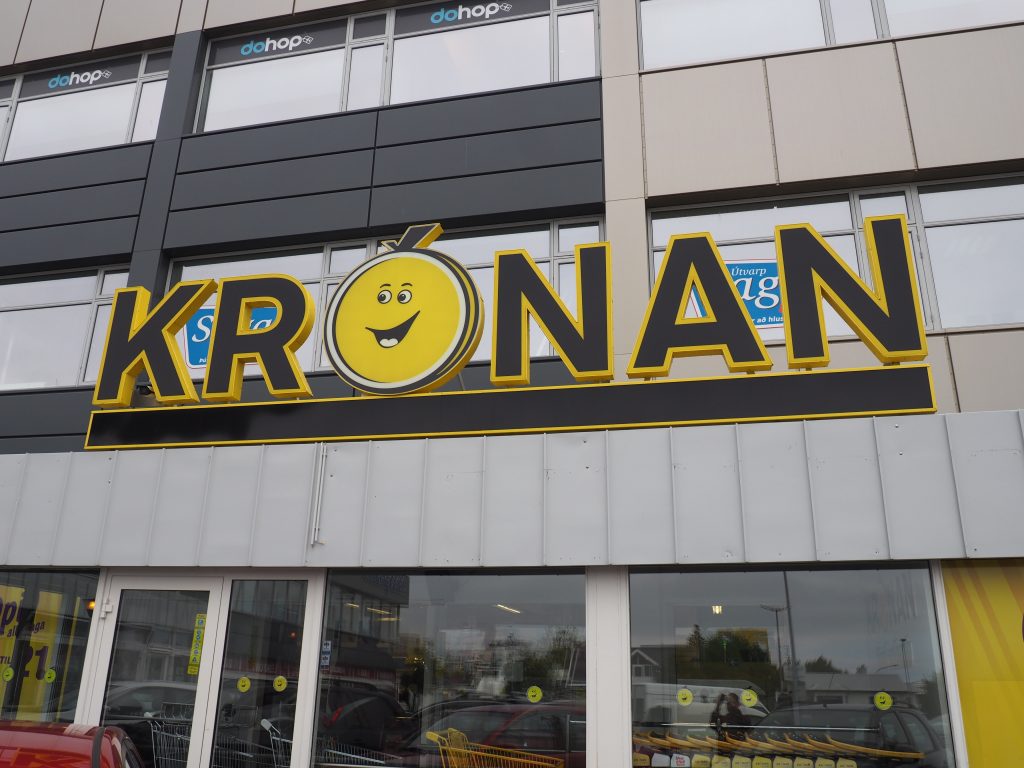
Reykjavik is really the only major city in Iceland, making it different from anywhere else I have ever been. It is the beating heart of Icelandic culture and administration. So much of the entire nation is heavily concentrated within Reykjavik. Here are some things you should know before you visit. Reykjavik is expensive. To cut costs I bought food from the supermarket most days. But even the budget stores there were three times as expensive as regular supermarkets in the UK. Be sure to budget for the high cost of Iceland before going. Visiting museums, transport, and souvenirs can also be costly. It can be cheaper if you book everything in advance. This is also wise as Iceland is becoming such a popular destination, with hotels hostels and excursions often selling out fast.
Also remember not to tip. Giving tips is simply not part of Icelandic culture, and if you do tip, you’ll probably be looked at as if you’re crazy. So that’s another way to save money.
Be prepared for any kind of weather. As they day in Reykjavik: “Don’t like the weather? Just wait 5 minutes”. It really can change multiple times every hour. If venturing outside the city, be careful of Icelandic horses. They are a beautiful and unique breed, often being little bigger than ponies. But they are very strong and sometimes violent. So watch out. Other tips are just common sense so I’ll just leave you with one last fact. Until recently, dogs were banned in Reykjavik.
It goes back decades to a time when the local council decided dogs have no place in the city, for some reason. So they just straight up banned them. Without dogs, Reykjavik came to be known as the city of cats. People just accepted that dogs weren’t allowed. But then in 1984 one man broke the ban by taking his dog Lucy into the city. He was reported to police and ordered to hand over his dog. Yet he refused, causing a national scandal in which people largely sided with him and Lucy. Still it was only in 2006 that the ban was fully lifted, marking an end to the brutal repression long suffered by Icelandic dogs.

